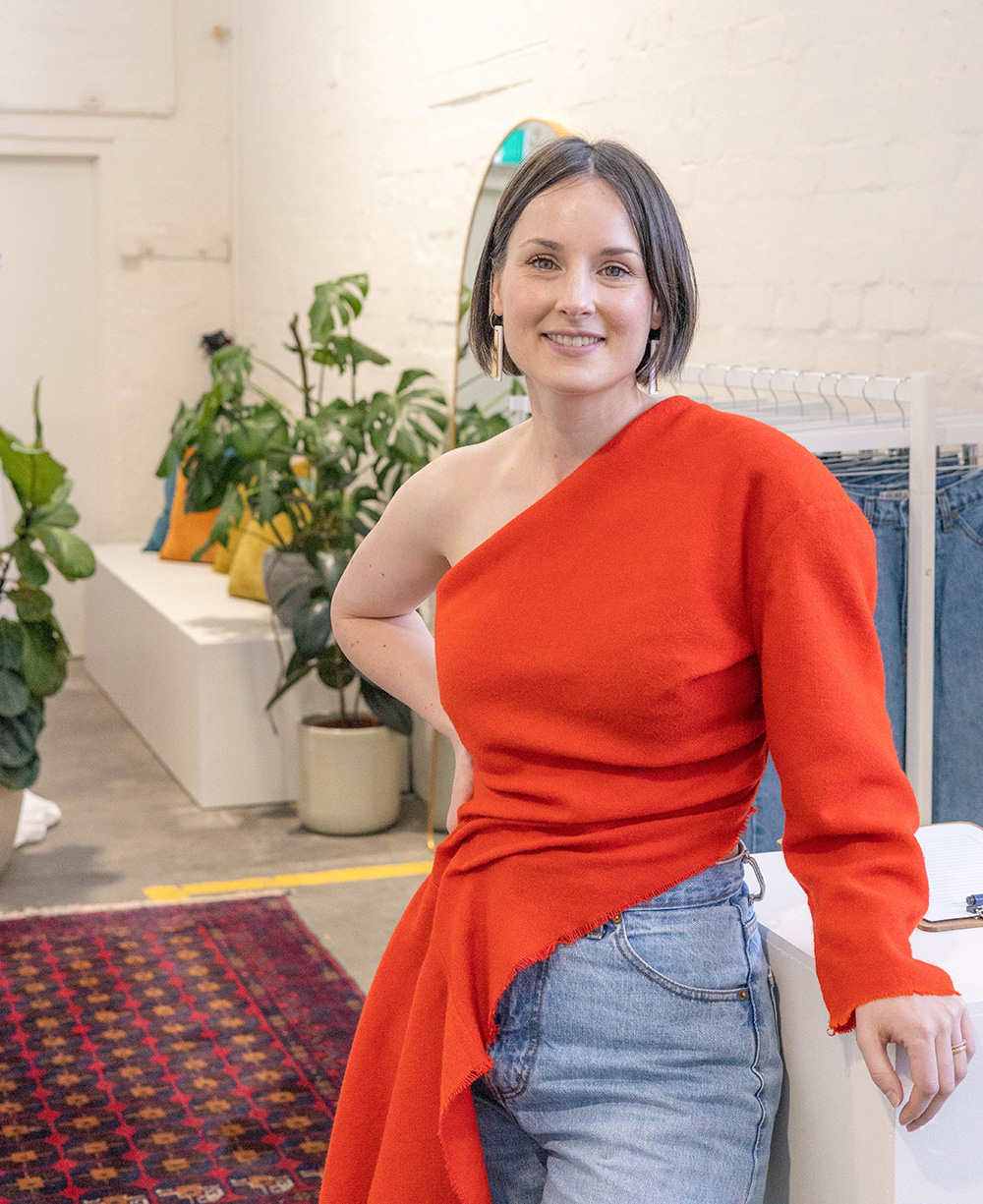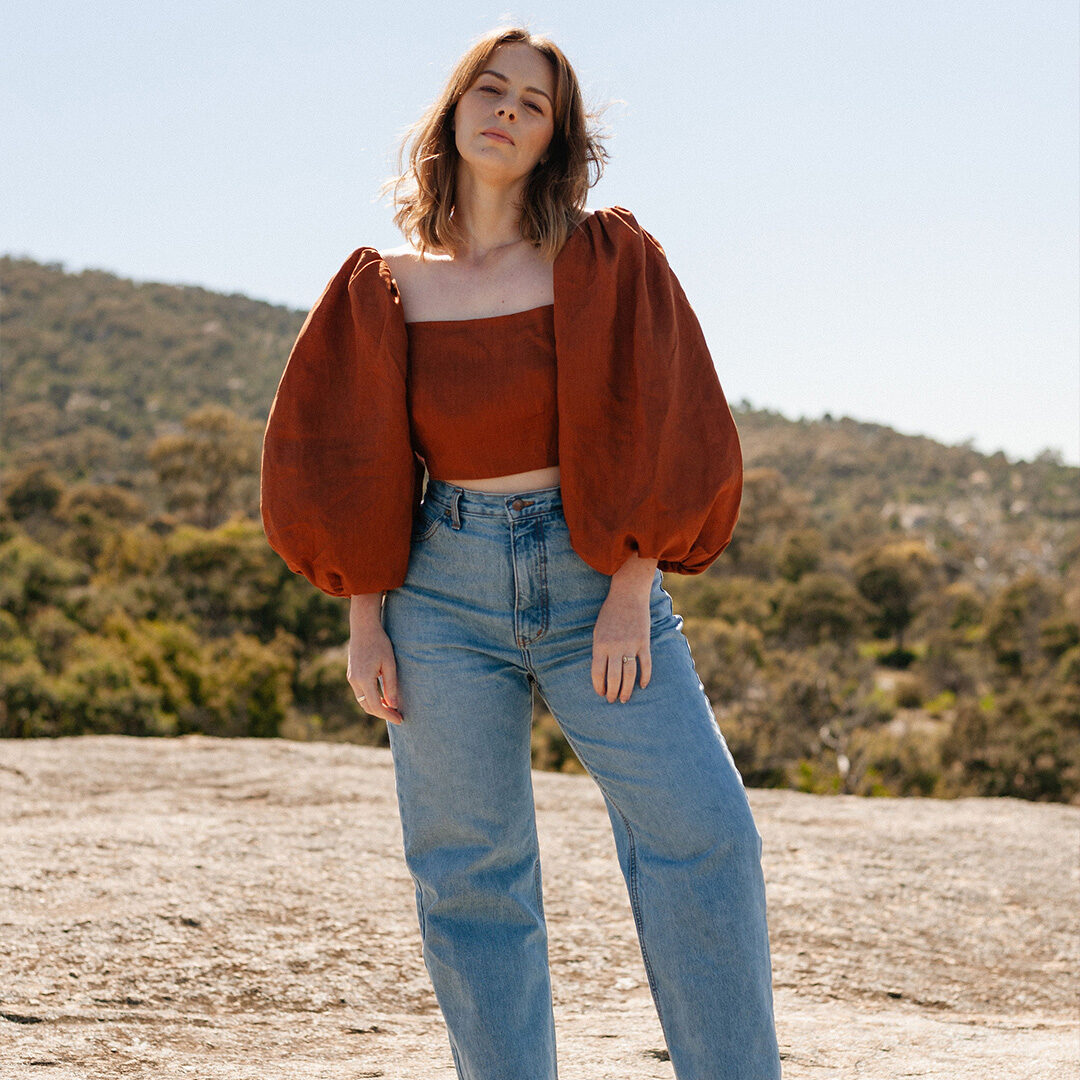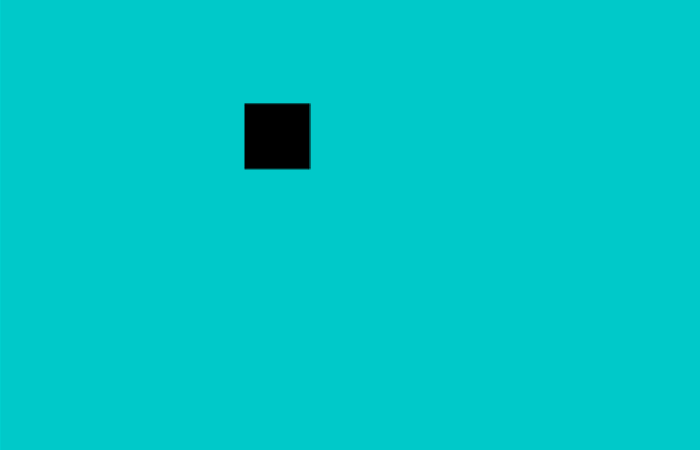ARTICLE / THE MAKING OF... SERIES
The making of...
HERA Denim.
This week's "The making of..." blog series showcases Brianna Murphy's journey as the founder of HERA Denim. Having struggled to find jeans that fitted her own body shape, Brianna realised she wasn’t alone as more women came forward with similar experiences. Looking to smash the perception that ‘one shape fits all’, HERA makes jeans for women of all diverse body shapes and sizes. This is Brianna’s story.
Series
The making of... Series
Tags
Entrepreneurial
Start-up
Welcome to The making of... blog series. To start, can you give us a brief background into who you are and where you’ve come from?
I’m Brianna Murphy, founder of HERA Denim. I created HERA Denim after seeing a need for women to find jeans that fit their shape. I worked in the bridal industry before HERA and saw so many women feeling that there was something wrong with their body shape because clothes so often don’t fit.
I studied fashion design and technology and have sewed from a very young age. My love for sewing, and design and my attention to detail - especially in fit - is much of the strength I bring to HERA. I also love working with women. Through building this brand I’ve been able to collaborate and work with so many different women and find out more about the struggle they face when shopping for jeans.
The fashion industry has created standard fits and sizes that don’t work for so many women's body shapes and proportions. As I grow my brand it’s so important for me to truly show representation of the community of women in the world by providing jeans that will fit women’s diverse body shapes. Right now HERA Denim caters for women who have small waists and wider hips, but for the future of HERA Denim, we hope to provide fits for more body shapes so all women can find jeans that fit.

Brianna Murphy, Founder of HERA Denim
Creating jeans that will fit all women is a great mission. So, how did you come up with the idea?
I personally was never able to find jeans that fit my body shape, and for too long I felt there was something wrong with my body; like I was the 'odd' one out. After deciding to move away from the bridal industry, I had the idea to create a jeans brand. Before making any jeans, I interviewed a range of women to find out what problems they faced when shopping for jeans. As you’d expect, there were many fit issues and other ways women were disappointed with their jeans. Quite a few had the same problem as me; too tight in the thighs, hips and bum and too loose in the waist. For me, this was the first problem to fix.
You mentioned interviewing women to find out what their specific issues were around fit, was there any other research you undertook to arrive at what you've got now? How did you test your product-market fit?
After my initial surveying and interviews, I began the sampling process to create my first pair of jeans. I made the very first few prototypes, fitting them on myself. Then as I worked through more samples with my Melbourne-based jeans manufacturer, I found fit models from the community, women with hourglass and pear-shaped figures.
Whilst I was going through this process, I created a simple, branded website with brand images that allowed people to see what was coming. I also captured some emails of potential customers whom to target the brand launch on. Once I had my first sample, I photographed it and put it up on the website as a preorder. This helped to fund the first production run. StartIng with one style, I’ve added a few more since. This is a lean start-up with a long-term view in mind, building the brand slowly.


Getting your first sample must have been a real buzz. What were those first iterations of your product like?
For the first batch, I negotiated a very small production run. This would allow me to get the product out sooner and test the fit of my jeans on a wider range of paying customers and get some really valuable feedback. I would also invite as many customers as I could (who lived nearby) to come over to my home to try jeans on. This provided me with some great feedback and still does. If I can see customers in person wearing my jeans, it’s the best.
You mentioned having pre-orders to fund your first production run. What happened after that? Did you continue to bootstrap?
So far, I’ve funded everything from my savings. It’s been a very lean startup with minimum order quantities and no marketing spend. I’m looking towards getting funding over this next year to help scale and grow. Now I’ve gained that initial feedback and have gone through the cycle of sales and production a couple of times, I am feeling confident that there is a market for my jeans.
No money spent on marketing? What about branding? Can you tell us about the process and how you arrived at where you are today?
I was able to work with a startup company that helped mentor me throughout a lot of the initial process, including brand development. They guided me in creating my brand, along with a lot of other research and development prior to launch. I knew the name I wanted and had a vision for it all in my mind, but they helped me to articulate that brand image and translate the vision throughout.
It’s wise to seek out help from others. And what about your brand’s awareness? With no budget for marketing, how are you getting the word out there? How do you plan on scaling the brand?
So far, I’ve been able to gain traction through PR, connecting with influencers and simply hustling - as I mentioned earlier I have not yet engaged in any official paid marketing. I’ve gifted jeans and gained some traction through word-of-mouth. I’m making plans to scale the brand, which will include engagement with a marketing and/or PR agency to help generate a broader reach.
We definitely agree with your approach. This is a great story for PR and we wish you all the best with getting it out there. How about future challenges? What's the biggest challenge or challenges you think you'll face moving forward?
There will be challenges in learning how to scale in a way that is best for me and the business. There are a lot of ideas out there, however, it is important to narrow down what is best for my brand. Getting funding to scale and finding the right way to secure funding may also be a challenge. But I’ve learnt that the best thing I can do is ask people who have done it before. If I don’t know something, I ask as many people as I can to get their input.
Thanks for sharing your story with us Brianna. Before you go… knowing what you know now, what advice would you give another entrepreneur who’s about to embark on their own startup journey?
Enjoy the process. There will always be that future goal or next milestone you are looking towards and hopeful for. Those future goals and milestones will never go away, no matter where your business is at in its journey, so enjoy the stepping stones along the way and be sure to celebrate the success.


